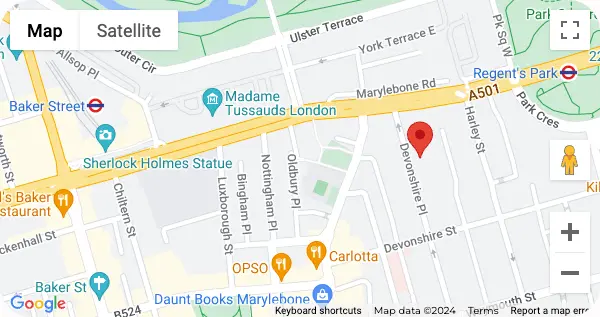Summary:
- Apple cider vinegar (ACV) acts as a natural disinfectant, exfoliant, and astringent. Many people think it softens mole tissue.
- Do not use ACV on suspicious moles, adults with benign moles that have been examined by a doctor can use it.
- Misuse can lead to chemical burn, scars and infections.
- Before using ACV on moles, always dilute, patch test, and do not leave it overnight.
- ACV is not proven mole remover, so professional treatments would be smart option.
Introduction to Apple Cider Vinegar
Apple cider vinegar (ACV) is made from the juice of crushed apples that goes through a process called fermentation. Yeast is added and it turns the juice into alcohol. Good bacteria changes the alcohol into acetic acid, an ingredient of ACV that gives a sour taste and gives health benefits.
There are two types of ACV, filtered that looks clear and smooth, and the raw and unfiltered, also called as mother, that looks cloudy and is made of natural bacteria and yeast from fermenting.
The Science of ACV for Skin Health
Apple cider vinegar gains its popularity in beauty routines because it is known to fight bacteria and fungus. People believe that it helps their skin become more clear. But medicine has not proven its benefits for clearing the skin, that is why medical professionals are careful about recommending it.
ACV is not a medical treatment and should not be used directly on the skin without diluting it with water because it may cause burns, scars, blisters and infections especially if you have sensitive skin.
Benefits of Apple Cider Vinegar
Many people are willing to try ACV because of its natural properties that may benefit their skin health:
- Cleansing and exfoliating: It may be helpful removing dirt, oil and bacteria.
- Skin toner: It might balance the skin pH that makes your skin feel fresh.
- Acne: It may kill bacteria and reduce redness from acne breakout.
- Eczema: Some people with eczema find ACV relieve the itchiness.
- Dark spots: Acids in ACV might help fade blemishes and dark spots.
- Wound care: It could protect small wounds from bacteria.
- Other uses: Some use it for stings from jellyfish, scalp itch or body odour.
Apple Cider Vinegar for Removing Moles
There is no strong proof that it works on removing unwanted moles, While some who use apple cider vinegar helped with removing moles, others report side effects like burns or pain.
ACV is very acidic that is why when placed and left on the skin for too long, it causes skin irritation that is worse than the mole you want to remove.
Another thing is, not all moles are common skin growths, some are signs of skin cancer. So, removing those moles with ACV might cause more problems than solutions. Removing the mole itself by ACV does not remove the cancerous cells on the skin.
Removing moles with ACV is risky. It is best to consult your dermatologist before trying any natural home remedies.
See also: Identifying Skin Cancer: A Guide.
How to Treat Moles with Apple Cider Vinegar
Remember that pure ACV is very strong and can irritate your skin. It is safe to dilute it by mixing a half teaspoon of ACV with one cup of water. Do a patch test by lightly dabbing it on your skin to check if there is any reaction from the acid. Do not over use it, because the acid that may clear your skin is the same acid that may irritate it.
Tips for Safe Application
Before using ACV on your skin, keep in mind these safety tips:
- Have it checked by a specialist to rule out any skin disease if any.
- Apply petroleum jelly on the surrounding skin of the mole to protect your skin.
- Using gloves especially if you have sensitive skin helps from irritation.
- Be mindful of the negative effects of ACV on your moles, like bleeding, pus, swelling. Discontinue the application if you notice any of these.
- Avoid applying apple cider vinegar on red, raised moles. These require medical attention.
Learn more about Dermatologist-Recommended Mole Removal Methods.
Effective & professional doctor-led Moles at our central London clinic
Does ACV Actually Work?
Since ACV has acetic acid that contains antibacterial and antifungal properties. It could help clean the skin and prevent infections from bacteria or fungi.
But there is not enough medical evidence behind ACV working to remove moles. Most medical sites and healthcare professionals stress that it is more likely to cause harm than help.
Moles vs Skin Tags: What is the Difference?
Here is how you can tell them apart:
- Moles: Harmless dark spots that are caused when skin cells grow in clusters. Some can turn into cancerous mole.
- Skin tags: Small, soft pieces of skin that hang off the body. They are harmless.
- Warts: Caused by HPV virus(human papillomavirus). They are easily spread from person to person.
See: Home Remedies for Skin Tags and Warts.
Substitutes For Apple Cider Vinegar For Skin Care
Though not medically proven, these are other home remedies people try to remove moles at home:
- Garlic paste
- Castor oil + baking soda
- Pineapple + sea salt scrub
- Aloe vera gel
- Tea tree oil
- Iodine drops
- Honey and flaxseed oil
- Banana peel
- Hydrogen peroxide
- Coconut oil
There are safer options and doctor approved ways for removing unwanted moles:
- Professional removal: Mole can be shaved, freeze, or excise under local anaesthetic.
- Mole creams: Mole removal creams are sold over the counter.
- Makeup: This is a cheap and non-invasive option to conceal your unwanted moles.
After the surgical excision, you can follow our Post-procedure Care for Skin Lesion Removal
Conclusion
Apple cider vinegar has some potential benefits because it can fight off germs and exfoliate your skin when used with care. But it might irritate the skin when trying to use it as a remedy to remove flat moles and may cause irritation, burns, scars, and may delay the diagnosis of skin cancer.
Always see a specialist first just to make sure your mole does not post any risks. Remember that professional mole removal done by a doctor is the safest and most effective option and cure.
Find out more in: Learn more in: ACV for Skin Care: Myths vs Facts
FAQs
- Can apple cider vinegar treat moles?
There is no scientific proof. Some people claim success, but risks are high.
- Is it safe to use?
Not really. And ACV can burn and scar skin if used improperly.
- How fast does it work?
Some say you will see changes in 1 to 2 weeks, but results are mixed and doctors advise against it.
- Can apple cider vinegar make it worse?
Yes. It may cause burns and conceal evidence of cancerous cells in the skin.
- What if my mole changes after using ACV?
Stop using it right away, and make an appointment with a dermatologist.
Reserve a mole removal appointment
One of our experts will be more than happy to answer any questions you have.
Book AppointmentEmma Ashwood
★★★★★
Very informative.
21st November 2025
Dr Hasib Ur-Rub
★★★★★
The best
22nd November 2025
Harriet Steel
★★★★★
I had a fantastic experience at the Harley Street Skin clinic - everyone was super helpful and constructive
28th November 2025








